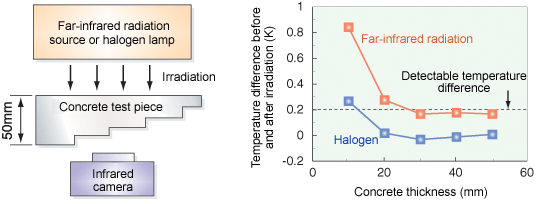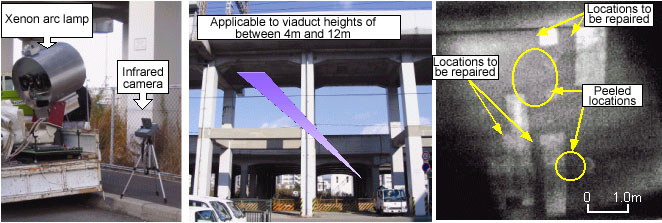| 5. Concrete Peeling Detection Using the Active Infrared Radiation Method | |
|
The active infrared radiation method using a halogen lamp, in which a temperature difference is forcibly generated by irradiating the concrete surface with light to detect peeling, has been applied in the field of engineering. This method, however, is insufficient as peeling can be detected to a depth of only about 10mm, and the method cannot be applied to structures where there is a large distance between structure and light source. A system was therefore developed by which the peeling of reinforcing bar covers can be detected by selecting a new light source in accordance with the distance between the light source and the irradiation surface. The results of indoor tests showed that, in terms of thermal effusion and light gathering of the irradiation source, a far-infrared radiation source (Fig.1) is appropriate when the distance between the light source and irradiation surface is short (such as tunnel linings). Conversely, a xenon arc lamp is appropriate for large distances such as viaducts. Peeling to a depth of about 50-mm can be detected by a 5-second irradiation using the far-infrared radiation source, and to a depth of about 30-mm with a 20-second irradiation of the xenon arc lamp. Fig.2 shows the conditions of measurement in the case of viaducts. This technique enables the identification of locations for repair and those where peeling is present.  Fig.1 Comparison of the far-infrared radiation source and the halogen lamp  Fig.2 System using the xenon arc lamp and viaduct measurement examples |